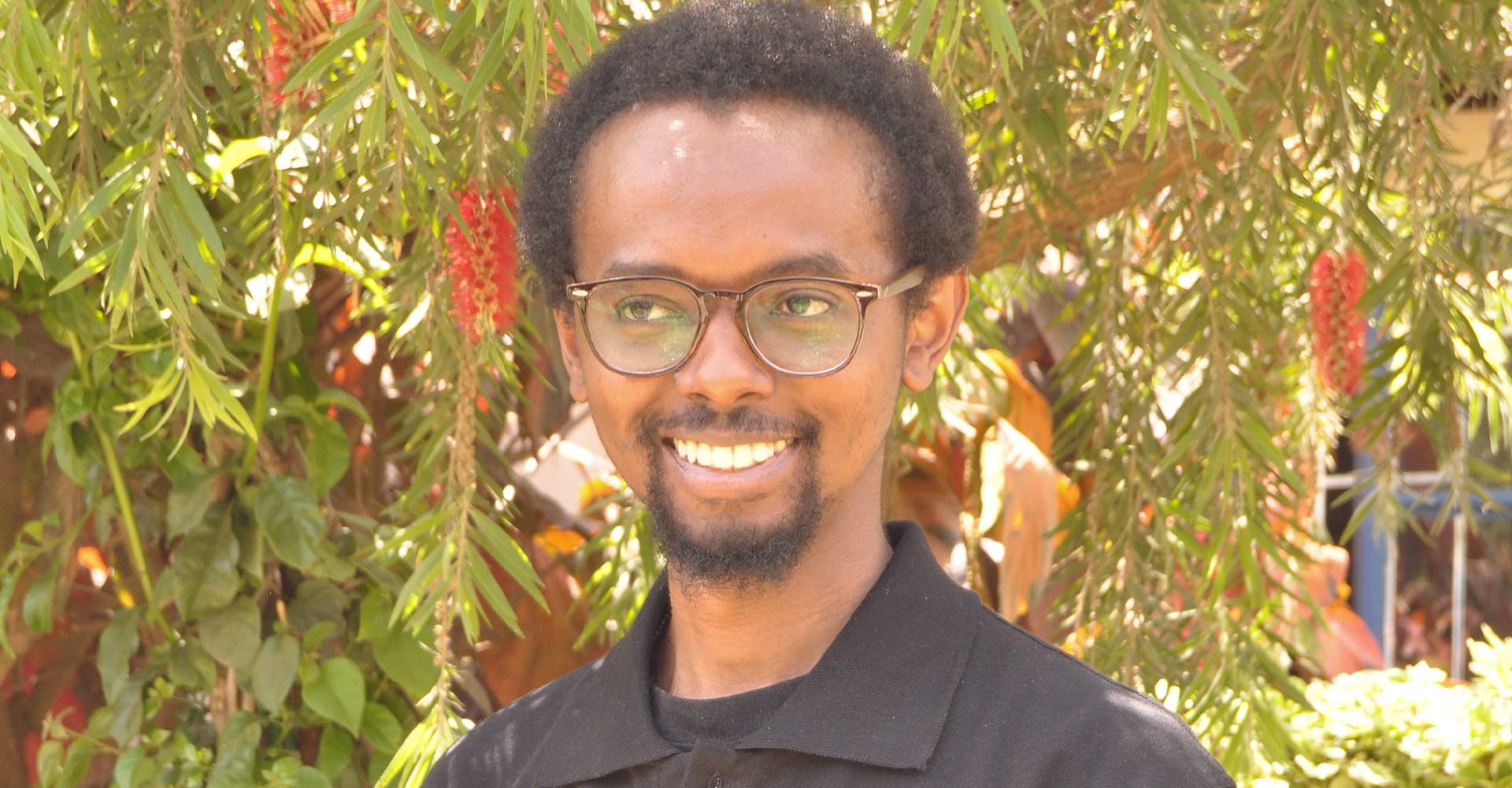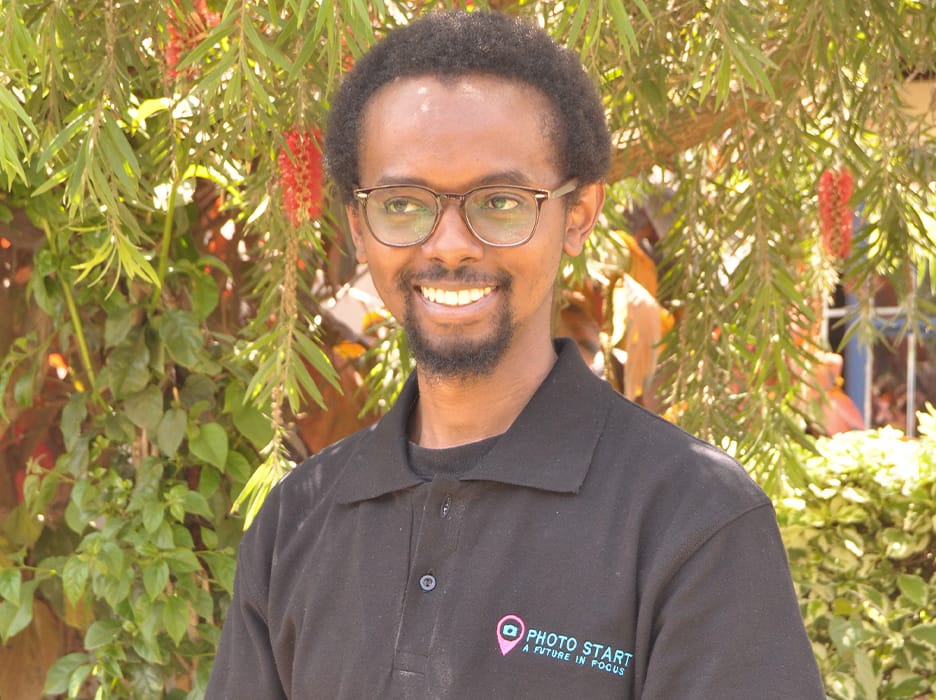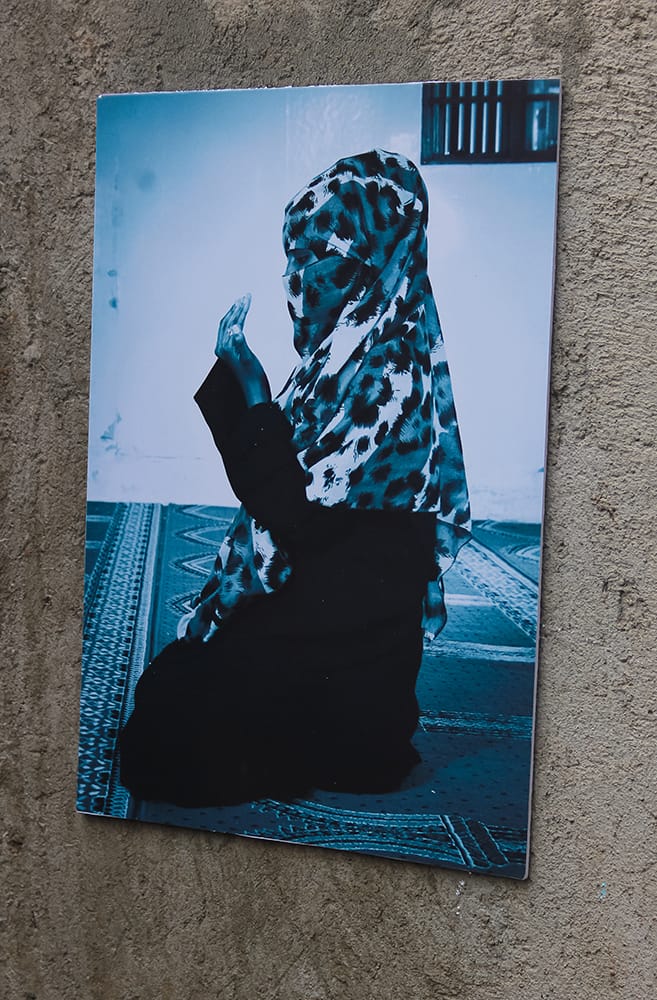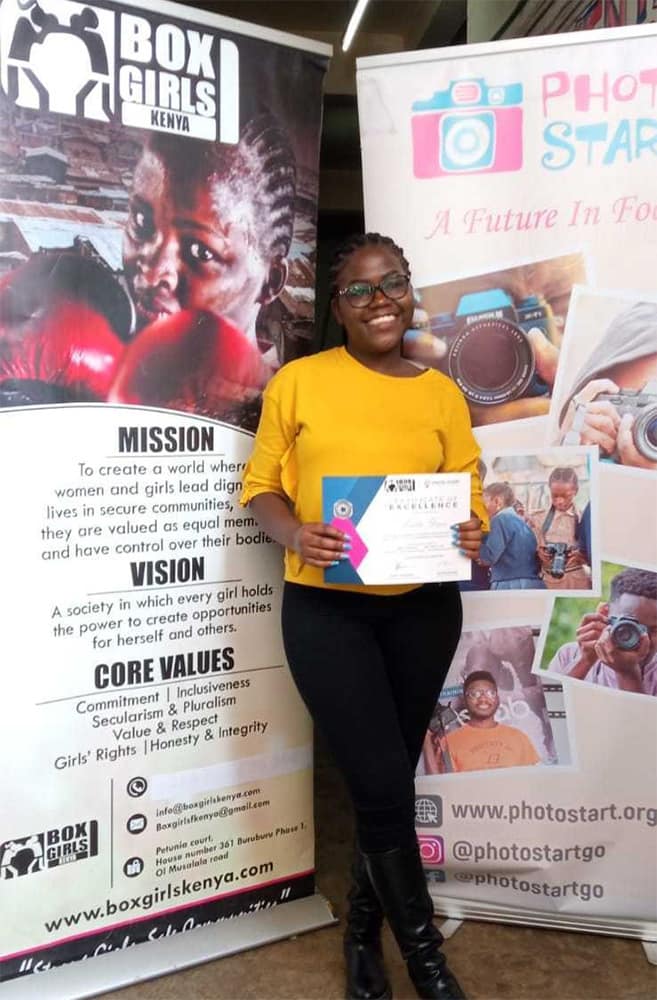

We recently interviewed one of our remarkable Photo Start Photography Instructors to explore the positive effect photography can have on communities and individuals.
In our interview with Douglas Githua, an experienced professional photographer, we delve into his unconventional start, optimistic perspective, and the profound rewards of teaching photography to aspiring young minds.
Douglas provides valuable insights into customizing teaching approaches, fostering self-expression, and the transformative influence of photography on students’ lives. Come along on this journey where each click of the shutter signifies a stride towards empowerment and the realization of dreams.
Can you please introduce yourself and share a bit about your background in photography?
My name is Douglas Githua. I am a professional photographer with nine years of experience specializing in events, weddings, and portrait photography. My journey into the world of photography was rather unconventional. It all began when my sister had a job and needed a second shooter. Little did I know that this would become my first photography class and assignment on day one.
How did you become involved with Photo Start, and what motivated you to work with them?
In 2018, my journey with Photo Start began when I volunteered to teach for the first time. I was invited to assist in conducting a session in Kibagare, Kangemi. Prior to that, the idea of teaching photography hadn’t crossed my mind. The initial encounter with the students during that session had a profound impact on me. Witnessing the students’ joy, curiosity, and enthusiasm to learn this new skill left a lasting impression, prompting me to volunteer more time working with Photo Start.
What is a typical day like for a Photo Start photography instructor?
The routine for a Photo Start instructor starts with creating a lesson plan that outlines the topics to be covered in the day’s class. Following this, the instructor would inspect the gear designated for the hands-on practicals, ensuring that all equipment is in working order with charged batteries and available memory cards for all the cameras.
After this preparation, we journey to the partner organization where the students are based, which typically takes between 45 minutes to an hour. Upon arrival, the instructor would take attendance of the students and kickstart the day’s lesson with a segment of theory or in-class learning before transitioning to the practical, hands-on activities.
What is the most rewarding part of being a Photo Start photography instructor?
The rewarding part of being a Photo Start instructor lies in guiding students through the curriculum and witnessing their transformation. It’s immensely rewarding to observe their journey from nervous beginners to the stage where they can confidently undertake photography projects or assignments, assured of their ability to produce high-quality pictures.
What are some of the challenges you face as a Photo Start photography instructor?
As a photography instructor, I encounter a couple of challenges. Communication with our students can be a hurdle at times. Despite my efforts to simplify concepts using familiar and relatable language, there are instances when clarity is elusive, leading me to rely on the show-and-tell methods.
Accessibility sometimes poses another significant challenge. Some partner organizations are located in informal settlements where access is limited. This complicates the logistics of reaching these locations efficiently.
How do you tailor your teaching methods to accommodate diverse learning styles and backgrounds?
Teaching students from diverse backgrounds requires a flexible and inclusive approach. I emphasize visual and hands-on learning. Practical sessions, demonstrations, and real-life examples help bridge potential gaps in understanding.
I also offer individualized support when necessary. This involves providing additional explanations, guided practice, and personalized feedback to ensure everyone understands the concepts.

How do you encourage students to express themselves through photography, especially considering cultural and individual differences?
When we do our hands-on practicals, I encourage my students to photograph what they find interesting – keeping in mind the concepts and techniques that they have learned during the class theory sessions. This gives them freedom to explore their surroundings and show me what they value and find intriguing.
Can you share a memorable success story of a student who has benefited significantly from Photo Start’s programs?
We had a student named Felix who went through our program this year in Kariobangi, Kenya. He came in as an amateur photographer who took pictures just for fun, but after going through the program and learning the concepts of photography, he managed to land a job as the official photographer for one of the Kariobangi football teams.
Another student in Uganda named Tchomba joined the program as a complete beginner, and now he shoots weddings and is the official photographer at his church.
In what ways do you see photography positively impacting the lives of the students you work with?
Photography has had a transformative impact on my students, building their confidence and self-expression. Initially reserved, some have blossomed through program interactions and hands-on experiences and are now able to articulate their thoughts. Additionally, others have been able to seize opportunities in the form of paid gigs, from weddings to birthday parties. These jobs not only validate their skills but also offer a means of earning income independently.
What advice do you have for individuals who aspire to pursue photography as a passion or career?
Begin with what you already have; you don’t need the latest camera or fancy gear. Many people now have smartphones with capable cameras that can kickstart their photography journey. Take advantage of numerous free online resources to learn photography concepts, engage in hands-on practice, and start building your portfolio. It’s about utilizing what’s accessible to you and learning as you go.
How can the broader community support and contribute to the success of Photo Start’s mission?
We aim to help students share their stories and make a positive impact in their communities. Donated cameras and accessories are crucial for our programs, as 100% of our tools come from such contributions that help us teach our students.
Additionally, support through mentorship, tutoring, and internships from experienced photographers can greatly assist our students in navigating the industry.
We extend our gratitude to Douglas for sharing his wisdom and allowing us to see the world through his eyes.
Through his dedication, students not only learn valuable skills but also discover new avenues for self-expression and economic independence.
Photo Start’s mission depends significantly on the crucial support of the broader community, which plays a pivotal role in shaping the next generation of passionate photographers. The support involves more than just financial contributions, extending to mentorship, resource-sharing, and advocacy. This collective commitment creates an environment for aspiring photographers to thrive, fostering a collaborative effort that fortifies the foundation for building dreams and contributing to cultural enrichment.





